By John Gilstrap (But not really)
A couple of weeks ago, I posted in this space my observations about writing for translation to audio books. Well, wouldn’t you know it? Basil Sands, the voice of Jonathan Grave, my literary alter ego, paid attention and agreed to pen a guest post about an audio guy’s view of audio books.
Basil has been a frequent poster here on TKZ since the beginning, and he’s a crack author in his own right.
As you read this, I will be supervising a team of movers who will be packaging pretty much everything we own for six months’ of storage before we move to the dream house in West Virginia. My inevitable silence will have everything to do with the lack of an internet connection.
And now, ladies and gentlemen, from the great state of Alaska, I bring you Basil Sands:
===
Seanchaidhe – n. – literally “a bearer of old lore”. A Seanchaidhe is a traditional Irish storyteller/historian.
I like to imagine that somewhere in my past there is an Irish ancestor who made his living travelling from village to village telling stories to both teach and entertain. Having been a voracious reader since I was five years old, and according to my parents was a storyteller even longer, having come to the world right off screaming a tale on my first breath after being ripped from the warmth of my mother’s womb.
Okay, maybe I wasn’t acting at quite that young, but not much later I am told.
I have always loved telling stories. My stories. Other people’s stories. The stories the Leprechauns tell me around the fire at night. Factual, fictual, historical or fantastical. I love hearing stories and I love telling stories. And so I believe do you dear reader of this blog.
After John Gilstrap’s article of a couple weeks ago on the topic of writing for audiobooks he invited me to come and talk a bit more on the topic from a different aspect of the gem of storytelling. That of the narrator/producer.
I have been an avid follower of TKZ since not long after its founding. My Leprechauns and I have happily been leaving our marks in the comments below when we can. From a hidden cabin fortress built into the side of a mountain in Anchorage Alaska I have been writing thrillers and recording audiobooks since 2006. John’s books were among the first of my professional step into the world of “books on tape” and I have not looked back.
From what I have seen, creating audiobooks seems to appear relatively simple to a great deal of the population, including a surprisingly large number of writers. This is particularly true when an author balks at the cost of having a pro create one. For a ten-hour novel without tons of research heavy material this can range from $6000+ upon delivery for a ‘per finished hour’ (PFH) contract to zero out of pocket up front with a fifty/fifty split in a ‘royalty share’ (RS) contract. The latter of which can potentially entail the author sharing even more significant dinero if the books sell well. Of course, that share can also be zilch if it doesn’t, the narrator is taking 100% of the actual risk on a RS deal aka 50 hours of labor for no return.
“How hard can it be?” I’ve heard from more than one author, “You just sit in closet and read the book into the microphone. I think I will just save the money and do it myself.”
Following is an excerpt from an actual email an author sent to me when they realized just how much their book was making on a royalty share contract (it was a lot) and thought maybe they didn’t want to share 50% of that kinda money for the whole series, but they also still didn’t want to pay the standard rates for a narrator producer.
“I decided to record book 2 on my own. I’ve always had an ear for voices (or is it a tongue?) and figured I read well enough–It’s turns out I hate it. It’s very much like real work. It will be my last, guaranteed.”
And much like work it is! Very, very much!
Here is a breakdown of the process it takes to make an audiobook:
- Book is published
- self or traditional
- Audiobook is contracted
- Traditional publishers usually own the audio rights and have their own folks that do this
- Self-pubbed authors and small-press authors choose from a variety of audiobook self-publishing companies and do the whole thing themselves
- Narrator is selected
- Self-pubbed and small-press authors typically pick the narrator themselves based on recorded auditions
- Traditional audiobook production houses most often have a stable of narrators they choose from to narrate particular genres
- authors seldom have a say in the matter
- But might
- Narrator receives materials and production begins
- In trad houses the only thing the narrator does is ‘prep read’ the book and then narrate the book
- All of the remaining production work is done by directors, producers, editors, proofers, sound engineers and marketing teams
- In self/small-pubs the narrator is responsible for everything but the writing, artwork, and marketing bits
- Although if it is RS the narrator has equal responsibility for marketing if they hope to get paid
- Completed materials are proofed and edited
- Proofing = reading the manuscript while listening and annotating all mispronunciations, missed words, extra words
- Editing = listening through book, removing extraneous sounds, odd breaths, thumps and mouth clicks, weird noises*
- Self-produced narrators most often hire out these two functions to a single person
- Corrections recorded by the narrator are inserted by the editor and final files returned for mastering
- Mastering = making the audio sound pretty, this takes an audio engineer to get really superb sound
- Audio engineers have a really good ear and sense of space, and some pretty expensive gear
- Often a narrator will hire an engineer to get their sound settings right for their recording space, then little if any final mastering is needed
- Very few editor/proofers are also sound engineers
- Final book is uploaded and eventually comes up for sale.
- Everybody gets paid…hopefully
- In trad houses the only thing the narrator does is ‘prep read’ the book and then narrate the book
- authors seldom have a say in the matter
That is the very basic process right there. Those steps, in some form or another, all must be done for every single audiobook to brought into existence.
How long does it take to make an audiobook?
A general idea of finished length of any audiobook is typically going to be in the range of one finished hour for every 9500 words. Therefore a 60k word book will be about five hours long at the end. A 100k word book comes in at a bit more than ten hours. But those lengths are only the finished product. The time it takes to create that product is variable based upon several factors, some controllable others not. Depending on the experience level of the narrator it takes between two to five hours on mic to create one finished hour of audiobook. And that is just the narrator’s part!
Here are a few of the things that can affect the time it takes to record an audiobook:
- The heaviness of the writing
A typical thriller usually reads much easier than a PhD level tome titled Capturing Non-Markovian Dynamics on Near-Term Quantum Computers. - Language, IE how it is used
A 600K word fantasy epic (first of 12 volumes) with entirely reconstituted laws of phonetic pronunciation and every person and place name having added ‘eth’, ‘el’ and ‘ae’ randomly to names and otherwise common words throughout is much more challenging than the vast majority of, perhaps all, cozy mysteries. - Character Accents and Dialects
If your characters have regional accents, that usually takes extra prep and may also require several takes for a scene. Like the time I had Canadian, South African, Dutch, English, Australian, and New Zealand characters all together in a single high-speed conversation. That scene took me a few extra moments to get through. - Regional Spellings/Pronunciations
Schuykill River in Pennsylvania. Houston Street in Manhattan. Worcester in Massachusetts. Look them up if you think you know them but aren’t from them.
Writing your novel with an audiobook version in mind
Several years ago I narrated a dozen or so titles for Sci-Fi author Piers Anthony, his whole backlist of books published before he became famous with his wildly popular Xanth series in the 80s. In his Cluster series, about a Tarzan-like interplanetary hero who takes on the form of whatever species he is sent to help, Anthony has a number of characters with names spelled like #>@<}, and ]**(#), and ^…–~ and so on. I contacted him directly and asked how those were to be pronounced.
He replied, “When I wrote those in the sixties and seventies audiobooks were not a thing. I never even imagined those being pronounced out loud. Feel free to just make something up, I trust you.”
These days audiobooks are a huge industry, and it is expected to continue to rise in popularity for the foreseeable future. Whether or not you as a writer enjoy, or can even withstand, listening to audiobooks you can bet that 30%-40% of your audience does. Many folks, myself included seldom are able to read for pleasure due to busy schedules, but have plenty of time to listen to audiobooks while doing physical tasks or familiar chores that occupy hands and eyes, but not so much the brain. For the last decade or so I only read for pay, and then seldom get to choose the materials but get assigned. I do however ingest several hours of audiobooks most days while working my big boy job.
So for writing your books with the idea of having an audiobook recorded here are a handful of suggestions that will make it not only easier for a narrator to get it right, but will ultimately bless your print readers as well.
- Read your text out loud to yourself.
This is one of the greatest methods of self-editing in my experience. When we read our manuscript aloud, we have to make our lips and tongues say the actual words in the order they are on the page rather than letting our minds read the words as we think they should be. If you the writer stumble saying a sentence out loud, that is likely how the reader is hearing it in their heads. - Use Dialogue Tags appropriately.
That multi-national conversation above could not have turned out as well as it did had the author not put tags or action descriptors on nearly every line of dialogue to make the speaker obvious. If your conversation is a rapid fire back and forth between only two characters, you may not need as many tags, but will still need to make sure there are sufficient ones to keep the narrator aware of who is saying what. - Announce accents and any speech related quirks early and clearly
There are few things as angina-inducing for a narrator as having read hundreds of pages of a particular cowboy character’s dialogue only to discover on page 369 the single mention of the aforementioned character’s posh British accent and how it was so out of place riding the range in 1870s Texas. If there is an accent mention it upon or as close as possible to the character’s first dialogue. Do not assume the reader will pick up on it based on place and setting if it is not a single location story. Even then don’t expect the reader to hear it in the same voice you heard in your head when you wrote it. - For the sake of your narrator’s health please keep strained sounding voices to a minimum
I am not referring to emotional strain as that goes with the story, but actual physical strain on the vocal folds of the narrator. Gravelly, raspy, rough, harsh, etc. Attempting such a sound in the booth for extended periods can cause actual lasting damage to the voice. I once did a 6-book series of romance-thrillers that followed a group of five studly former Marines and their retired boss as private detectives. Each book focused on one of the characters, with the others all appearing in support roles in that story. The voice of the fifty-something retired Master Gunnery Sergeant “sounded like he maintained a diet of gravel washed down with tar coffee as he chain-smoked cheap cigars”. He only appeared a handful of times in each of the first five books, so I was able to sustain almost exactly the sound I thought the author imagined. It was all just fine until I got to the last book and the entire thing was Gunny’s story, including almost 50% of the dialogue. After that sexology of stories** I had to take a month off narration to let my voice heal. - Prepare a list of special details and potential surprises
If you have any special pronunciations, accents or dialects, uncommon words, and so on and want your narrator to be dedicated to you for life, make a list of such things for them in advance. This not only saves the narrator time, but saves the continuity of the story by not having excessive pickups***. - Write Well!
This is probably the single most important thing for any author to have success with audiobooks. The text has to have the capacity to become real in the mind of the reader both via manuscript reading and audible storytelling. This means something quite different from one genre to the next, but in all cases a well written story will literally flow off the narrator’s tongue and sound natural to the ear.
Finally, here are a couple of things related to self/small pubbed authors specifically, where the author has more control over the process.
- Fit the right narrator to your project
A gentle voiced kindergarten teacher narrating an alpha-male biker gang vs cop thriller probably won’t seem realistic. Likewise, don’t hire a male former Marine turned lumberjack turned actor to narrate your cupcake centric cozy mystery unless you want all of your characters, male, female and children alike, to sound like chain-smoking-gravel-eaters. - Do not ‘direct’ the performance
Unless you are an actual experienced acting director managing that project in the studio looking through the booth glass, physically or virtually, unless you are that person then once you have accepted and approved the initial 15-minute sample of the recording the remainder of the narration, including voicing of characters, styles of reading, anything performance specific are up to the narrator. In most contracts by legitimate audiobook publishers, this is actually stipulated in some manner.
And lastly here is a bit for those intrepid adventurers among you who think you want to narrate your own books for sale.
- Radio/Broadcast experience does not translate to audiobooks
While they all use voice as the medium, audiobooks are nothing like radio, I know as I have done both. First off, “radio-voice” is not welcome, nobody wants to listen to non-stop announcer voice tell a story. The other big difference is comparable to that of a sprinter versus an extreme distance runner. Radio is 1-5 minute sound bites with commercial breaks interspersed while audiobooks are hours upon hours of uninterrupted you talking in different voices while all alone in a small dark box. - Audiobook Narration/Production is a Marathon
My shortest audiobooks are a couple short stories about 30 minutes long that took a couple days to fully produce. The longest is The Bible, at just over 86 hours completed, which took well over a thousand man-hours to make ready for publication. If you have ever done public speaking, you know that even a short speech or sermon, 20 or 30 minutes, can wear you out. Imagine talking in hour long segments, five or six times a day with only a ten-minute break for water to go in and out. It can be utterly exhausting. - Get Coaching first
If you are an experienced stage or film actor be advised, audiobook acting is only remotely similar. You will need coaching of some sort to ensure you are delivering the best product you can create with your voice alone. Every single part of the listener’s understanding of the story comes from the narrator’s vocal delivery. Audiobooks are 100% actor delivered, there are zero sound effects or mood setting musical scores in true audiobooks.
A Test: The Narrator’s Crucible
If you think you may want to narrate your own books, following in the footsteps of such greats as Neil Gaiman, Carrie Fisher or Oprah Winfrey before you spend your hard earned dollars on a fancy microphone, pre-amp, computer upgrades and software try this test.
- Pick your favorite book, eBook or paper doesn’t matter.
- Close yourself in a small dark room, like a walk in closet or half-bathroom, with only a single light to read by
- Read out loud for 1 hour, doing different voices for each character and stopping every time you make a mistake in the read and re-reading that line until you get it correct before continuing.
- Record yourself on your phone or laptop, etc. so you can listen back at the end
- Take a ten-minute break at the top of each hour
- Repeat for 2-3 one-hour sessions each day
- Do this every day for a week
- If you have not become disgusted by the sound of your own voice and given up by the end of the week, you might stand a chance at actually enjoying this narrating gig.
- Maybe.
There is a lot more detail trying to pour out of my fingertips than I could ever put into a single blog post, but this provides a 15,000 foot view, with a handful treetop skimming dives as a bonus.
If you are interested in learning more about the process, either as an author who wants your piece of the audio market or as a someone interested in becoming a narrator or producer here are some very helpful links that can get you in swimming toward the deep end fairly quickly.
Audiobook creation Exchange (https://www.acx.com/) – Audible’s division for self/small publishers, like KDP for audiobooks. ACX is a marketplace where authors, literary agents, publishers, and other Rights Holders can connect with narrators, engineers, recording studios, and other Producers capable of producing a finished audiobook. The result: More audiobooks will be made.
Narrator’s Roadmap (https://www.narratorsroadmap.com/) – the amazing Karen Commins’ extremely informative website – If you’re new to this career, every resource on this page — articles, books, connections, and videos — answers the question “How can I become an audiobook narrator?” You’ll find invaluable advice from industry pros that you will want to read and absorb. Success leaves tracks!
Audiobook Publishers Association – https://www.audiopub.org/ – APA is a not-for-profit trade association that advocates the common, collective business interests of audio publishers. The APA consists of audio publishing companies and suppliers, distributors, and retailers of spoken word products and allied fields related to the production, distribution, and sale of audiobooks.
Being me and the way I am it seems I have probably already used more than the number of words I should put here, therefore let’s move this thing to the chat below for conversifying and questionizing!
*Weird noises – Do not fart while recording, they might miss it in editing, but the listeners certainly will not. Trust me on this.
**Sexology – that may not be the mathematically correct word for a series of six but is fairly accurate to the storylines
***Pickups – small corrections re-recorded and pasted in, hopefully matching the surrounding original sound. May be done in a bar but only if you’re desperate.
BONUS! BONUS! BONUS! BONUS! BONUS! BONUS! BONUS! BONUS!
If you made it this far in my ramblings you deserve a treat.
I have US & UK Audible coupon codes for several of the books that I have both written and narrated.
THE NEW TESTAMENT, DARBY TRANSLATION
Drop me an email with your title preference and whether you are a US or UK resident and I will send you a code for a free download.
All I ask in return is an honest review on Audible.
Check out more about my narration and voice work at www.sandmanstudiosak.com

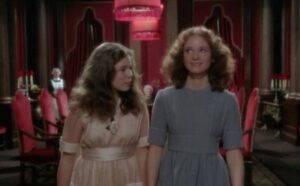
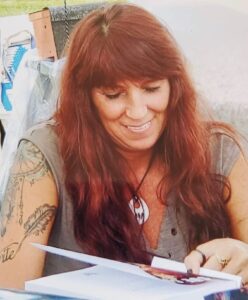
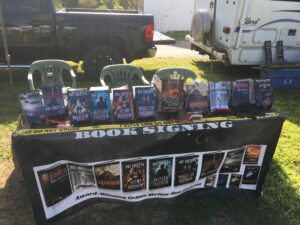 All book signings don’t need to be held in bookstores or libraries. I’ve had some of my most successful signings at local fairs and Old Home Days, and I’ve sold out and scored numerous book club invites.
All book signings don’t need to be held in bookstores or libraries. I’ve had some of my most successful signings at local fairs and Old Home Days, and I’ve sold out and scored numerous book club invites. Scenes are the bricks that build the fiction house. The better the bricks, the better the house. You don’t want bricks that easily crumble or aren’t fitted properly.
Scenes are the bricks that build the fiction house. The better the bricks, the better the house. You don’t want bricks that easily crumble or aren’t fitted properly.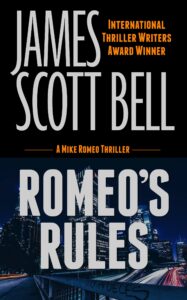
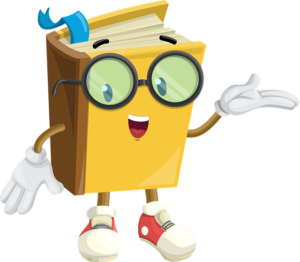 Without explanation, name four objects in your WIP.
Without explanation, name four objects in your WIP.  Jennifer Pound is a recently retired police officer where she thrived in various traditional and non-traditional policing roles. She spent years as the face of the RCMP (Royal Canadian Mounted Police) as a communications director. Her recent role was with IHIT, Vancouver’s Integrated Homicide Investigation Team — the largest homicide unit in Canada — where she saw the worst of people and helped to bring justice for the victims that died at the hands of evil.
Jennifer Pound is a recently retired police officer where she thrived in various traditional and non-traditional policing roles. She spent years as the face of the RCMP (Royal Canadian Mounted Police) as a communications director. Her recent role was with IHIT, Vancouver’s Integrated Homicide Investigation Team — the largest homicide unit in Canada — where she saw the worst of people and helped to bring justice for the victims that died at the hands of evil. Many police officers think the absolute worst; it’s a gift we’ve so graciously received, or perhaps more like a curse. Few of us can drive by a bag of garbage or a rolled-up carpet on the highway and not think about the nightmare that must live within. I’ve often wondered if it was just me, but I know with certainty, it’s not.
Many police officers think the absolute worst; it’s a gift we’ve so graciously received, or perhaps more like a curse. Few of us can drive by a bag of garbage or a rolled-up carpet on the highway and not think about the nightmare that must live within. I’ve often wondered if it was just me, but I know with certainty, it’s not.
 To test the theory, she made a bit of a detour. She turned down a cul-de-sac with few homes that only residents that lived there would need to access. She walked for a bit and then did an about-face, like she forgot something, crossed the road, and turned back. Hub cab carrying, douchebag guy continued to follow them. At this point, she was terrified. She grabbed her sister’s hand, and she ran. They ran until they reached the school and she lost sight of him. That’s when she called me.
To test the theory, she made a bit of a detour. She turned down a cul-de-sac with few homes that only residents that lived there would need to access. She walked for a bit and then did an about-face, like she forgot something, crossed the road, and turned back. Hub cab carrying, douchebag guy continued to follow them. At this point, she was terrified. She grabbed her sister’s hand, and she ran. They ran until they reached the school and she lost sight of him. That’s when she called me.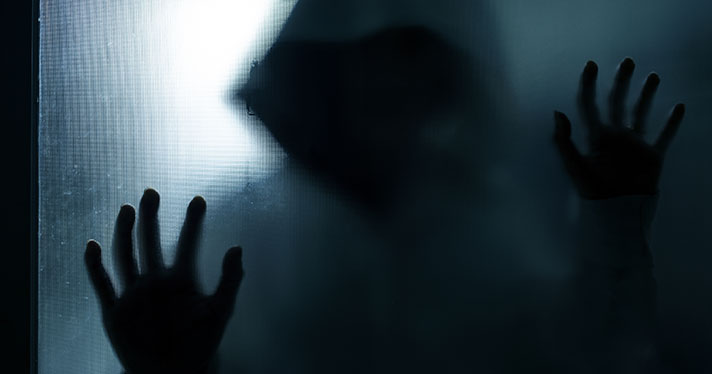
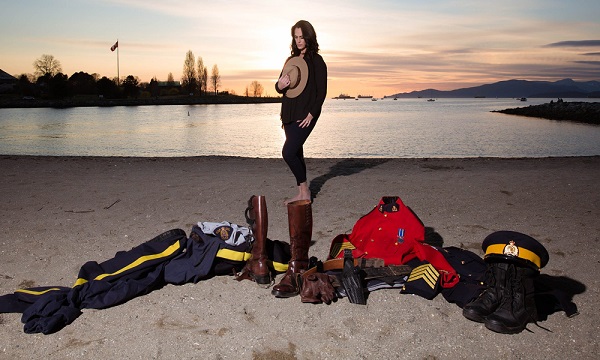
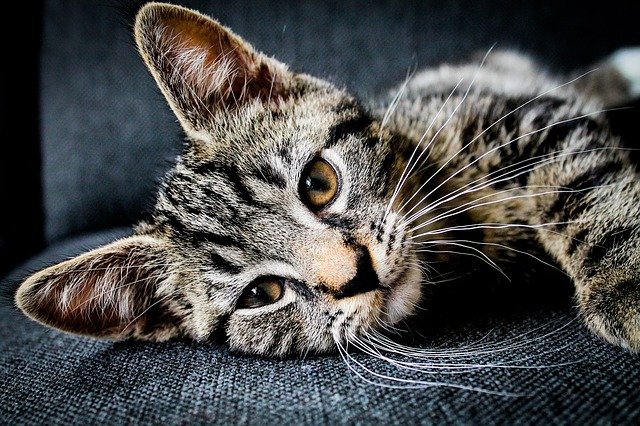



 Just a few weeks ago I began my first real foray into the world of Instagram for my art work (BTW I’m @clangleyhawthorneart if anyone’s interested:)) and I feel like I’m definitely in the ‘Instagram for Dummies’ phase! Bizarrely – since I’m only focusing on my art there – I seem to have discovered a whole lot of book and writing related pages so rather than being focused on my own work I’ve been salivating over beautiful photographs of libraries and book covers instead:). As with any new social media experience, I’m still in the throes of wonderment (which won’t last long – no doubt I’ll soon be getting the trolls and the weird follows from fake men!) but also in the thick of trying to work out how the heck to use it. So far I’ve really only managed to upload photos…
Just a few weeks ago I began my first real foray into the world of Instagram for my art work (BTW I’m @clangleyhawthorneart if anyone’s interested:)) and I feel like I’m definitely in the ‘Instagram for Dummies’ phase! Bizarrely – since I’m only focusing on my art there – I seem to have discovered a whole lot of book and writing related pages so rather than being focused on my own work I’ve been salivating over beautiful photographs of libraries and book covers instead:). As with any new social media experience, I’m still in the throes of wonderment (which won’t last long – no doubt I’ll soon be getting the trolls and the weird follows from fake men!) but also in the thick of trying to work out how the heck to use it. So far I’ve really only managed to upload photos…